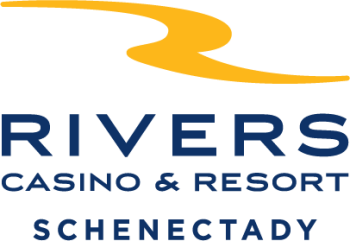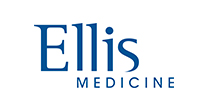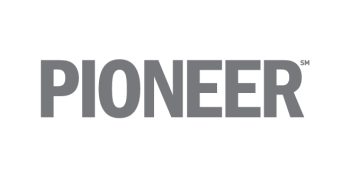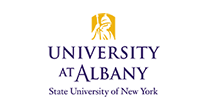News
January 19, 2021Capital Region Nets $81.5M in NIH Awards – Most in 12 Years
In fiscal 2020, the Capital Region’s Life Sciences Cluster received its greatest amount of National Institutes of Health (NIH) awards in 12 years, when adjusting for inflation. The federal funding is supporting a spectrum of research ranging from a plague vaccine, a coronavirus anti-viral, the profiling of dysfunctional COVID-19 lungs, and a neuro-exergame for Alzheimer’s disease patients, according to a Center for Economic Growth (CEG) analysis of new data from NIH’s Research Portfolio Online Reporting Tools (RePORT).
Awardees
In fiscal 2020, 16 firms and institutions in the eight-county region netted 163 NIH awards totaling $81,484,803 in current dollars for research project grants (RPGs), R&D contracts and other research-related expenses. That was up 6 percent from the previous year, and the highest since fiscal 2009, when adjusting for inflation. Helping drive up the total was GE Research in Niskayuna, which received an institutional record1 sum of $9.6 million from 10 awards. AMRI in Albany received 16 awards totaling $8.9 million – its greatest amount since fiscal 2011. At $12.47 million from 26 awards, Rensselaer Polytechnic Institute (RPI) received its greatest amount of NIH awards since fiscal 2014, when adjusting for inflation. Albany Medical College led the region in total funding, with $12.54 million from 35 awards.
“As we have seen from the COVID-19 pandemic response, progress is faster when industry and government work together to deliver on the needed advances,” said Martin Brown, GE Research’s biology and applied physics technology director. “The research support provided through the NIH has been vital to GE Research’s efforts towards innovations in medical diagnostics and imaging that have tangible, positive impacts on patient care and clinical outcomes. Along the way, we’ve had the great benefit of partnering locally with RPI, Albany Medical Center and others that help make the Capital Region such a standout leader in biomedical research.”
“During these challenging times, the Capital Region’s Life Sciences Cluster is delivering a much-needed booster shot to our economy. These increasing NIH awards are a testament to the world-class R&D assets we have here as well as the research talent that lives and works here,” said Katie Newcomb, CEG’s chief economic development officer.
Award Highlights
The institutes that provided the most funding for research in the Capital Region were the National Institute of Allergy and Infectious Diseases (NIAID, $12.7 million) National Institute of General Medical Sciences (NIGMS, $9.8 million) and National Institute on Aging (NIA, $9.5 million). GE Research had the region’s largest NIH award: $3.5 million from the National Institute of Biomedical Imaging and Bioengineering (NIBIB) for a lightweight, compact, low-cryogen, head-only MRI device.
Below are examples of local R&D projects funded by the NIH:
Neuro Exergaming: IPACES, a Ballston Lake startup founded by a Union College professor, Cay Anderson-Hanley, received $1.4 million from the NIA for clinical trials of the of the interactive Physical and Cognitive Exercise System (iPACES). This tablet-based, virtual reality-enhanced stationary bike is being tested on Alzheimer’s patients to see whether the cognitive benefit from its combination of physical and mental exercise outperforms that of physical exercise alone on a stationary bike.
While Union is not a partner in this new NIH project, the college had sponsored five related clinical trials that started between 2008 and 2017. In 2015, the Troy digital gaming studio 1st Playable Productions received a $149,999 Small Business Technology Transfer (STTR) grant from the U.S. Department of Health and Human Services to develop a neuro-exergame called “Memory Lane” for iPACES, which was tested in pilot clinical trial. Anderson-Hanley formed IPACES in 2018. The startup plans to use the NIA award to “enhance long-term exercise with iPACES via adding: a variety of interesting storyboards (e.g., tourist travel of states and countries), a virtual coach, smart watch notifications to promote adherence, and integration of tablet assessments with remote data capture.” The updated version of iPACES will undergo a pilot test and then IPACES will conduct an in-home multi-site clinical trial, the results of which will be published and used for commercialization.
Population-Wide COVID-19 Antibody Tests: The New York State Department of Health’s Wadsworth Center in Menands received $1.2 million from the National Cancer Institute (NCI) to research dried blood spot technologies to enable population-wide serological testing for SARS COV-2 (COVID-19) exposure and immunity. Citing a need to measure the quantity and quality of antibodies associated with both virus exposure and candidate vaccines, the researchers will seek to advance the use of dried blood spots to enable high-throughput, population-wide serological surveillance for SARS-CoV-2.
Coronavirus anti-viral: AMRI received two NIAID awards totaling $1.1 million for the chemical synthesis and process optimization of an anti-viral for enteroviruses and coronaviruses.
Plague Vaccine: Albany Medical College received $434,073 from the NIAID to develop a vaccine with improved safety and enhanced immunogenicity against the bacteria that causes plague, yersinia pestis, and the fecal-oral zoonotic pathogens that cause yersinosis: Yersinia enterocolitica (Ye) and Yersinia pseudotuberculosis (Yptb). The low-cost, single-dose Yptb-based vaccine would be orally administered promises to stimulate cross-protective immunity against yersinia pestis-causing plague and Ye and Yptb causing yersinosis. Even though yersinia pestis has killed 200 million in three major pandemics, the United States lacks a licensed plague vaccine.
COVID-19 Lung Profiling: GE Research received $99,973 to spatially profile the cell types affected by COVID-19 in the upper and lower respiratory tract. Researchers are seeking to understand the relation between COVID-19 death and the activation of a blood pressure- and fluid-regulating hormone system (Renin-Angiotensin system) that impacts blood vessel (endothelial) and immune cell dysfunction. This is a collaborative project between two major consortia, Human Biomolecular Atlas Program (HuBMAP) and Lung Molecular Atlas Program (LungMAP) (with the University of Rochester). This project is connected with two other GE Research NIH awards from 2020 and 2019 for a grand total of $1.4 million.
CEG Initiatives
CEG is supporting the growth of the region’s life sciences cluster by leading the following initiatives:
Marketing the Capital Region’s life sciences R&D assets at talent pipeline.
Conducting a life sciences cluster study that developed an action plan for: 1. improving the commercialization of local life sciences innovations, 2. strengthening the region’s life sciences ecosystem; 3. and recruiting contract research organizations (CROs) to the region.
Improving businesses’ access to labs at facilities, such as those at SUNY Polytechnic Institute, Rensselaer Polytechnic Institute and others affiliated with Innovate 518, a University at Albany-led collaborative effort of Capital Region incubators, accelerators, and entrepreneurial service providers.
Helping biotech firms, such as Vital Vio and Precision Valve & Automation grow through its Business Growth Solutions services, including continuous improvement, technology acceleration, energy and sustainability, supply chain development and workforce initiatives.
NOTES
1 NIH RePORT data dates back to 1992.
























